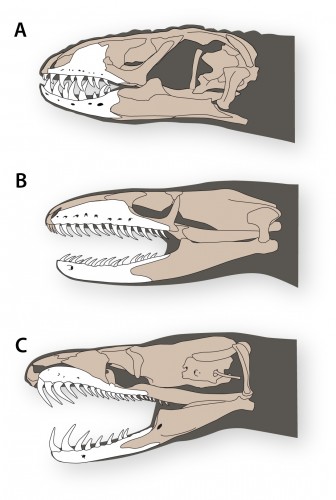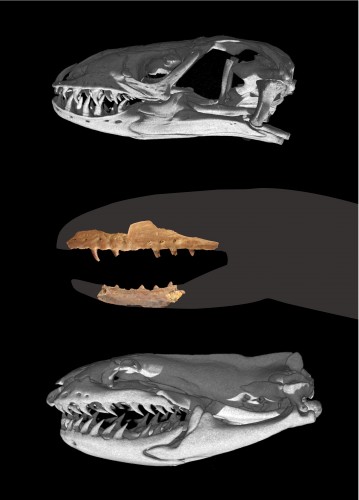
Until a recent paper published by Yale researchers in the journal Nature, Coniophis precedens had been largely overlooked. Now in the forefront, the evolutionary path of Coniophis precedens has become significant for its contribution to longstanding debates over the environment and feeding mechanisms of proto-snakes. Coniophis, a primitive snake from the end of the Cretaceous Period, serves a transitional link that bridges the evolutionary gap between lizards and snakes.
The dominant hypothesis regarding snake evolution argues that the predecessor to the modern snake was the burrowing lizard, an exclusively terrestrial species. The opposing hypothesis, that proto-snakes lived in a marine environment, is the source of some controversy in the scientific community. As Nicholas Longrich, the lead author of the paper and a postdoctoral fellow in the Geology and Geophysics department stated, “The discovery of the transitional snake was a nail in the coffin of the marine [hypothesis].”

The skeletal structure of Coniophis has distinctive features that are in common with the burrowing lizard and the modern snake. Amongst them is the lizard-like akinetic (less mandibular movement) skull that has hooked teeth for feeding on larger animals and the snake-like body, which has relatively underdeveloped neural spines representative of its evolutionary relation to the burrowing lizard. In contrast highly kinetic skull that facilitates consumption of soft, large prey characterizes modern snakes. The absence of that feature in Coniophis proved that the appearance of an advanced feeding apparatus was instrumental in the evolutionary radiation of snakes.
The fragility and small size of ancient snakes makes it difficult to find intact fossils. Longrich studied scattered fossil fragments of Coniophis precedens from a number of sources, including Yale’s Peabody Museum. Using a computer program to compare the characteristics of the fossil to existing phylogenetic trees, Longrich discovered that Coniophis simply did not fit neatly enough into a single tree for it to be classed as purely a snake or a lizard. The characterization of this species is important, Longrich says, because the “evolutionary background of snakes is not well-defined due to the absence of enough transitional data and evidence that characterizes how snakes evolved from lizards.” The leap in complexity of skull mechanics in the advanced snakes that followed Coniophis is consistent with the explosion in snake diversity that came afterward. This study shines light on the evolutionary origins of the diversity of modern snake radiation¬¬ (over 3,000 species exist today), which contributes to their ecological importance.

Longrich states that his future research aims do not lie in the realm of snake evolution, because “it is not clear where to go next in terms of snake research; the fossil record is poor and [he] is more interested in approaching the fossil record at the systemic level.” While the poor fossil record of ancient snakes makes research in this field difficult to pursue, it also renders Longrich’s discovery of Coniophis’s relevance a remarkable achievement.
Acknowledgements: The author would like to thank Nicholas Longrich for his input on this article and permission to use images from his paper.
